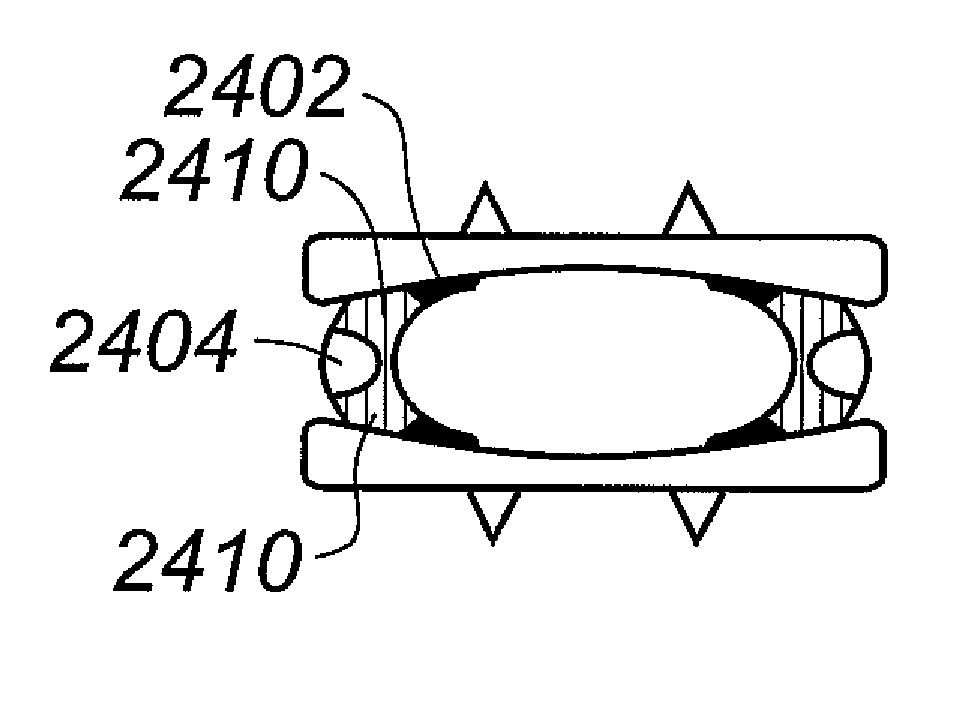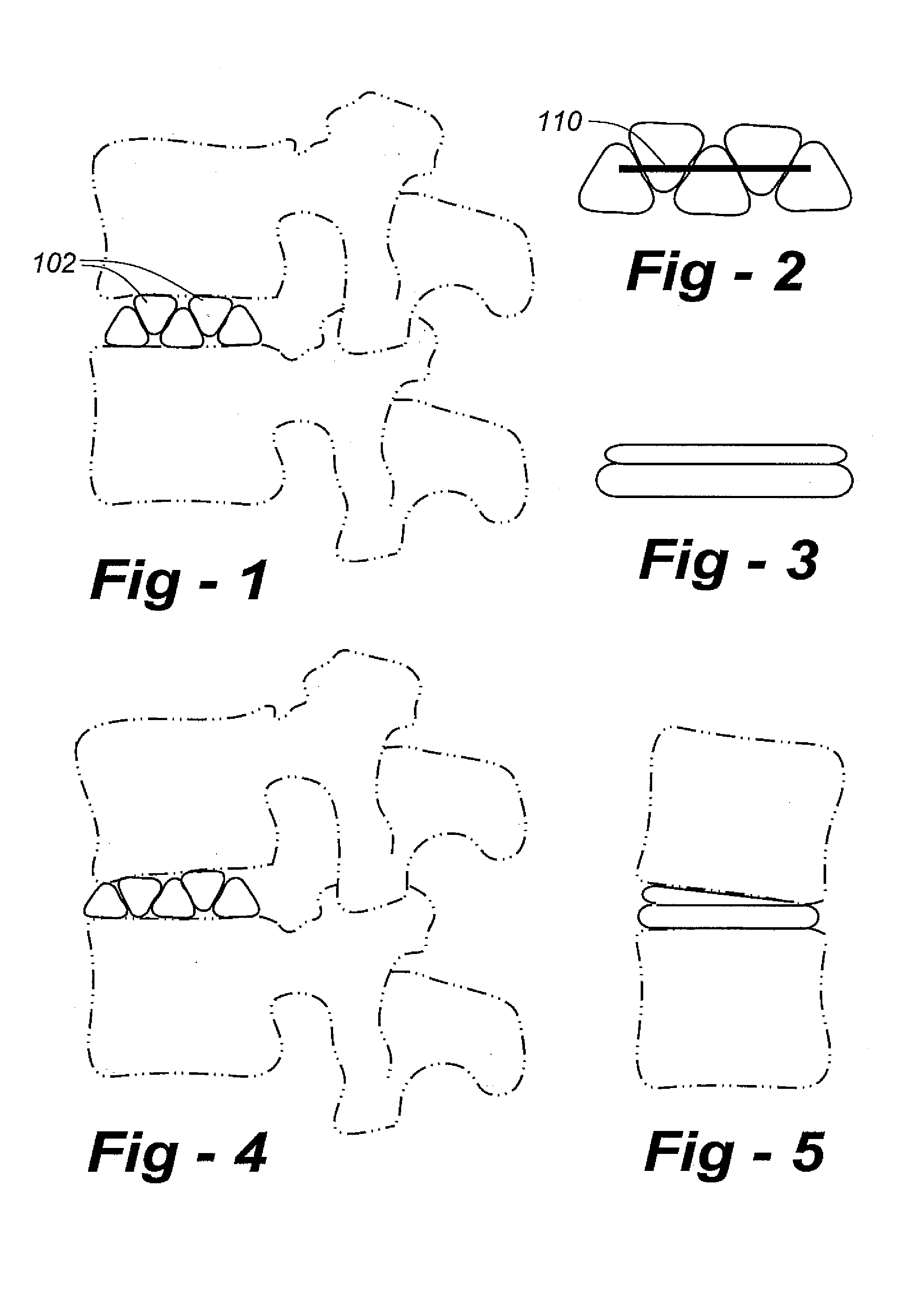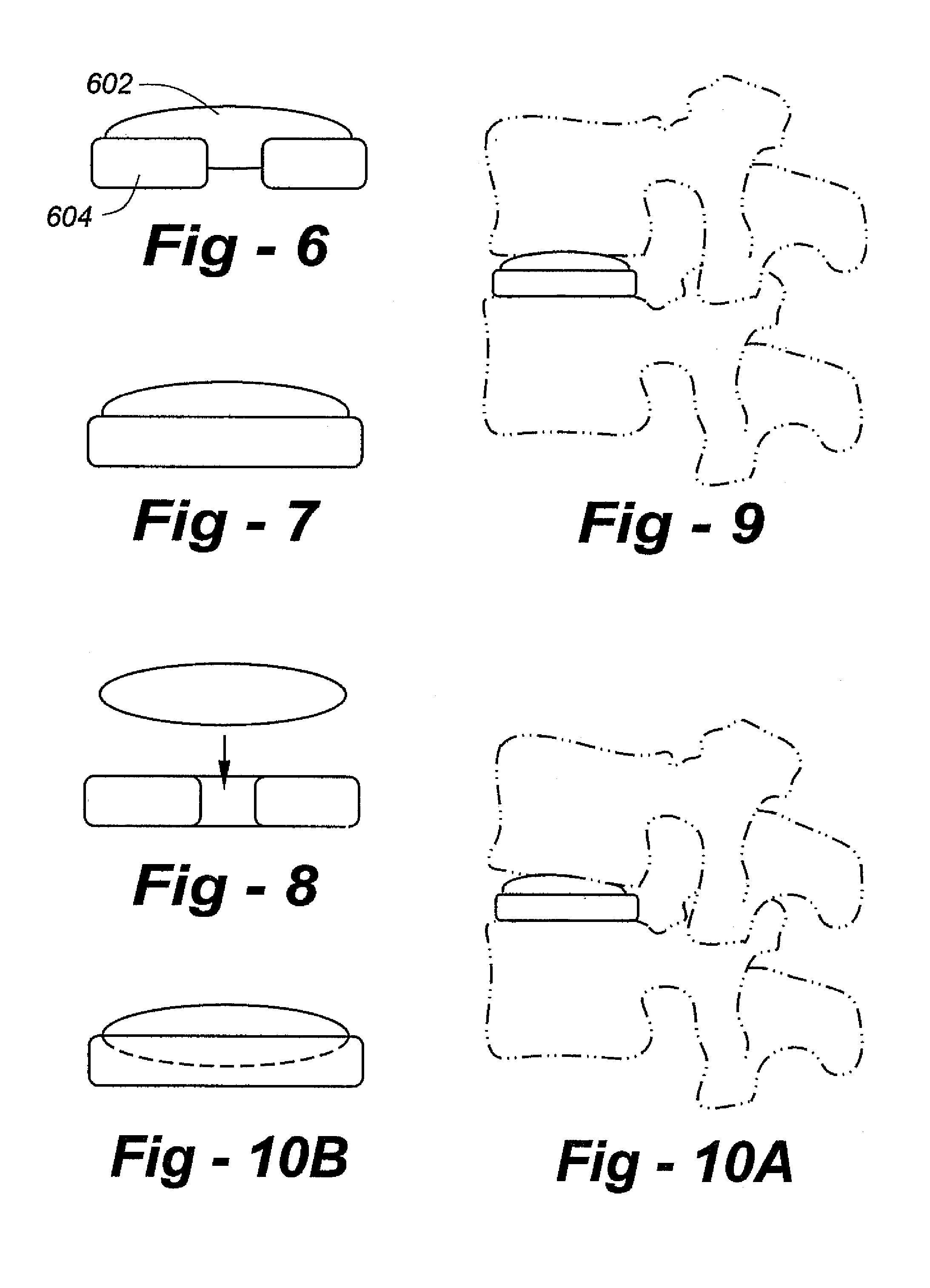Artificial disc replacement (ADR) using elastic tether member
a technology of elastic tether and artificial disc, which is applied in the field of prosthetic implants, can solve the problems of increasing the risk of separation of the artificial disc from the vertebrae above and below, increasing the changes of the future, and increasing the risk of dislocation of the artificial disc, so as to avoid dislocation, and reduce the risk of dislocation
- Summary
- Abstract
- Description
- Claims
- Application Information
AI Technical Summary
Benefits of technology
Problems solved by technology
Method used
Image
Examples
Embodiment Construction
[0137]FIG. 1 is a view of the lateral aspect of the spine and an ADR according to the invention, including a plurality of articulating components 102. FIG. 2 is a sagittal cross section of the ADR, illustrating how the articulating components are connected by one or more springs or elastic bands 110. Using this configuration, the articulating components are free to position themselves to “custom fit” the endplates of the vertebrae.
[0138]FIG. 3 is a view of the anterior aspect of the ADR, and FIG. 4 is a view of the lateral aspect of the ADR in conjunction with a flexed spine. The anterior components slide against one another to decreases the height of the anterior aspect of the ADR during spinal flexion. The elastic tether returns the articulating components to their resting position as the spine is returned to its neutral position. The articulating components and the elastic tether also cooperate to dampen axial loads to the spine.
[0139]FIG. 5 is a view of the anterior aspect of sp...
PUM
| Property | Measurement | Unit |
|---|---|---|
| Elasticity | aaaaa | aaaaa |
Abstract
Description
Claims
Application Information
 Login to View More
Login to View More - R&D
- Intellectual Property
- Life Sciences
- Materials
- Tech Scout
- Unparalleled Data Quality
- Higher Quality Content
- 60% Fewer Hallucinations
Browse by: Latest US Patents, China's latest patents, Technical Efficacy Thesaurus, Application Domain, Technology Topic, Popular Technical Reports.
© 2025 PatSnap. All rights reserved.Legal|Privacy policy|Modern Slavery Act Transparency Statement|Sitemap|About US| Contact US: help@patsnap.com



